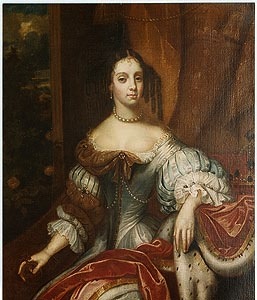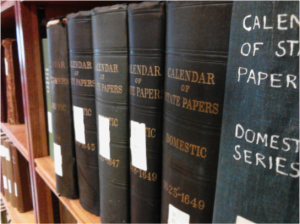Recusant Readership and the Library of Catherine of Braganza
Professor Dorothy Kim & Nicholas Hoffman ‘14
Catherine of Braganza is seldom discussed both within and outside of the academic sphere. An Infanta of Portugal, she is usually mentioned in the context of her marriage to Charles II of England, and a poor, often neglectful marriage it was. However, a closer analysis of her life reveals a rich history—of scandal, isolation, and recusant readership. A staunch Catholic, she was forced to navigate the complicated and often dangerous socio-political playing field of the English Restoration. During the hysteria of the Popish Plot, Titus Oates even accused her of being an agent of the Vatican sent to orchestrate the assassination of the King. In defiance of suggestions that she convert (or that Charles should divorce her or even have her kidnapped), she disregarded the volatility of her political status and commissioned the printing of numerous Catholic texts, in some cases at the expense of her printers who were  arrested and thrown in prison for their dissension.
arrested and thrown in prison for their dissension.
I had the privilege of working with Professor Dorothy Kim on evaluating and expanding upon a complete bibliography for Catherine, reading through each text in search for clues as to how she was able to publish and maintain this private library of what her public saw as “licentious” or “libelous” texts. I researched London printers, the migration of her private chapel between Whitehall and Somerset House, all mentions of her reading habits, her correspondence back home in Portugal, the various laws passed against her form of readership, and inventories of her goods (some of these sources only available in Portuguese) and delved into any mention of her religion. A majority of my time was spent poring over the Calendar of State Papers: Domestic Series, of the Reign of Charles II—an exhaustive volume that chronicles all the internal affairs of Charles’ reign.
 Using resources online and at the Huntington Library in Pasadena, California, significant headway has been made in the scholarship surrounding Catherine of Braganza. The endeavor was fruitful, revealing links between Catherine and various monasteries, both in England and on the Continent. One volume that can be traced back to her was discovered in Australia. In addition, the original bibliography of all texts that mention her has been greatly expanded.
Using resources online and at the Huntington Library in Pasadena, California, significant headway has been made in the scholarship surrounding Catherine of Braganza. The endeavor was fruitful, revealing links between Catherine and various monasteries, both in England and on the Continent. One volume that can be traced back to her was discovered in Australia. In addition, the original bibliography of all texts that mention her has been greatly expanded.
